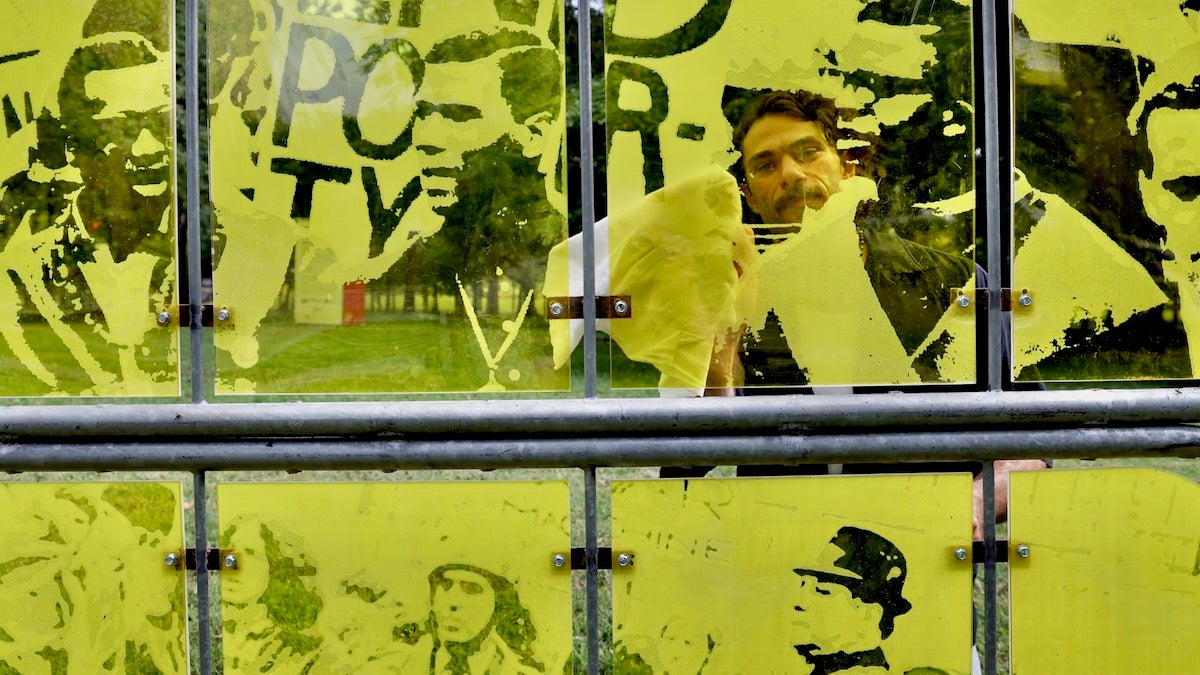Because the Parkway is often used for public events, barricades have become nearly ubiquitous to contain protests, redirect traffic and separate participants from spectators.
“Bar None” bends and manipulates barricades so as to appear functioning in ways never intended, said Charlotte Cohen, executive director of the Association for Public Art.
“It’s a transformation of what we think of as these protective structures: Those that keep us out, or keep us safe,” she said. “Certainly, they’re used to control. Above anything else, that’s really what the use has been. I think this transformation of that material is part of the real charm of the work, the ability to see them as something that can be a container for history.”
Barricades are designed to be moved, but “Bar None” is immobile, rooted to the ground with concrete footings. But ultimately, it is not built for the ages: It will be taken down at the end of October.
As a temporary sculpture, “Bar None” was conceived to speak to the country’s current social and political moment.
“I was interested in producing a work that is directly asking questions of our right to assemble,” Gentile said. “We see a lot of focus on what we understand as our rights under the Constitution starting to waver. I feel the intersectionality of our need to come together is often and pointedly attacked.”
Before “Bar None” comes down in October, Gentile will deliver a talk about the work on Sept. 18 at the nearby Parkway Central branch of the Free Library of Philadelphia. On Oct. 4, he will lead a workshop at the library on his collage techniques.
